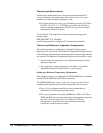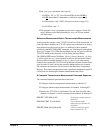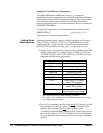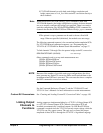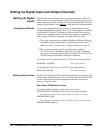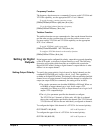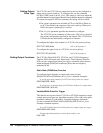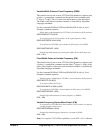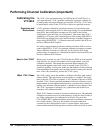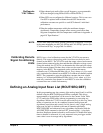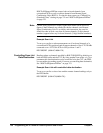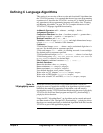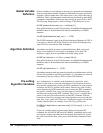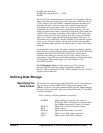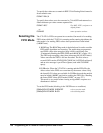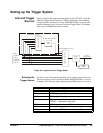
122 Programming the VT1422A for Data Acquisition and Control Chapter 4
Performing Channel Calibration (Important!)
Calibrating the
VT1422A
The *CAL? (also performed using CAL:SETup then CAL:SETup?) is a
very important step. *CAL? generates calibration correction constants for
all analog input and output channels on-board the VT1422A. *CAL? must
be performed in order for the VT1422A to deliver its specified accuracy.
Operation and
Restrictions
*CAL? generates calibration correction constants for each analog input
channel for offset and gain at all five A/D range settings. For programmable
input SCPs, these calibration constants are only valid for the current
configuration (gain and filter cut-off frequency). This means that *CAL?
calibration is no longer valid if channel gain or filter settings (INP:FILT or
INP:GAIN) are changed, but is still valid for changes of channel function or
range (using SENS:FUNC...). Calibration becomes invalid if the SCPs are
moved to different SCP locations.
For analog output channels (both measurement excitation SCPs as well as
control output SCPs), *CAL? also generates calibration correction constants.
These calibration constants are valid only for the specific SCPs in the
positions they are currently in. Calibration becomes invalid if the SCPs are
moved to different SCP locations.
How to Use *CAL? When power is turned on to the VT1422A after the SCPs are first installed
(and after they are moved), the module will use approximate values for
calibration constants. This means that input and output channels will
function although the values will not be as accurate as the VT1422A’s
specified capability. At this point, make sure the module is firmly anchored
to the mainframe (front panel screws are tight) and let it warm up for one full
hour. After it has warmed up, execute the *CAL? query.
What *CAL? Does The *CAL? query causes the module to calibrate A/D offset, gain, and all
channel offsets. This may require several minutes to complete. The actual
time it takes the VT1422A to complete *CAL? depends on the mix of SCPs
installed. *CAL? literally performs hundreds of internal calibration source
measurements for each channel and must allow seventeen time constants of
settling wait each time a filtered channel’s calibration source changes value.
The *CAL? procedure is internally very sophisticated and results in an
extremely well-calibrated module.
When *CAL? finishes, it returns a +0 value to indicate success. The generated
calibration constants are now in volatile memory as they are always ready to
use. If the configuration just calibrated is to be fairly long-term, the
CAL:STORE ADC command should be executed to store these constants in
non-volatile memory. That way, the module can restore calibration
constants for this configuration in case of a power failure. After power
returns and the module warms up, these constants will be relatively accurate.



